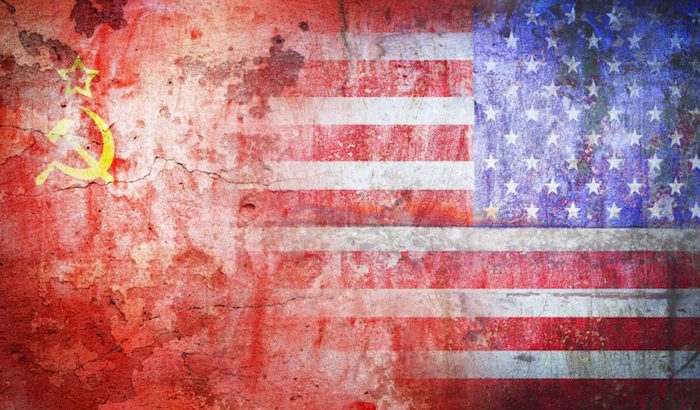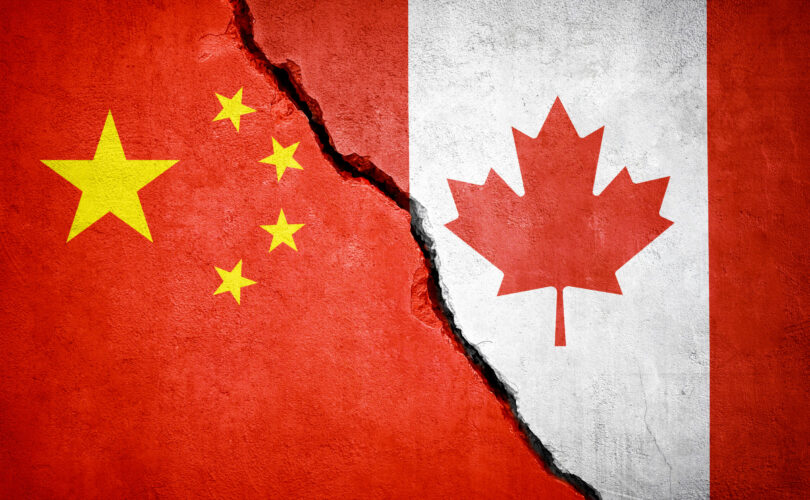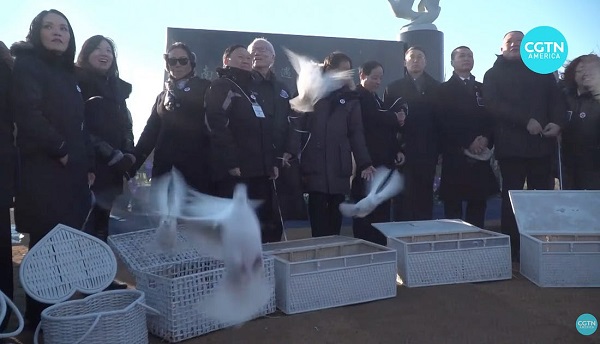Brownstone Institute
Cold War Nostalgia Explained

BY
The death of Mikhail Gorbachev this week unleashed a wave of nostalgia for simpler and better times. That’s odd, isn’t it?
Not so much. The freedom revolution that followed his reforms in the old Soviet Union did not turn out as planned. The world never became normal and peaceful as promised. And today, we can only look back on the 1980s with affection for better times.
Back in the day, in the midst of the Cold War, we had an overwhelming sense of the world being held hostage and on the verge of a global nuclear war that could wipe out humanity as we knew it. One wrong move, one bad piece of intelligence, one emotional outburst by a frustrated commander-in-chief, and boom, the world would go up in fire and smoke.
The stakes were so high! It was not just about stopping the end of life on the planet. It was about an epic struggle between freedom (the U.S.) and tyrannical communism (the Soviet Union). That’s what we were told in any case. In our political landscape, much of American politics turned on whether it was wise to risk peace alongside a Soviet victory or go for a full vanquishing of evil from the planet.
The battle over communism defined the lives of many generations. Everything seemed so clear in those days. This was really about systems and ideology: whether society would consist of individuals and communities making their own choices or whether an elite class of intellectuals would override individual plans with some centralized vision of utopia.
In those days, there was no question that we were the good guys and they were the bad guys. We had to spy, fight, build up the military, fund the freedom fighters, and generally be strong in the face of godless evil.
Ronald Reagan was just the champion that freedom needed in those days. He called the Soviet Union an “evil empire.” It drove the left nuts and cheered the base. He also attempted to shore up the American system: limited government (at least in some areas), lower taxes, sounder money, freer trade, and more rule of law rather than rule by administrative bureaucrats.
Then one odd day in 1987, late in Reagan’s second term, he and Gorbachev met and decided that they would together rid the world of nuclear weapons. They were giddy about the idea and the whole world went into shock and amazement, especially their respective advisors who rather liked the status quo. As a result, Gorbachev gained a victory at home – he ruled a poor and restless population sick of the nonsense – that encouraged him to seek more reforms, which only fed the appetite for more reform.
Reagan served his two terms and left office. Then dramatic change hit the world from 1989-90. The Soviet Empire fell apart, gradually at first and then all at once. Gorbachev became the country’s last leader as Soviet communism became plain-old Russian autocracy over time. The world could now be free! And the US could go back to normal.
About ten years later, I met Israeli historian Martin van Creveld. He was a scholar on war and terrorism. He held a unusual view. He believed that the end of the Cold War was a disaster and that the evidence was all around us. He said the world would never be as peaceful as it was when two superpowers faced off with nuclear arsenals. He described it as the perfect game for peace and prosperity. Neither would ever risk using the weapons but the prospect alone made states more cautious than they otherwise would be.
In fact, in his view, this nuclear standoff made the world as good as it could be given the circumstances. He admitted that he dreaded what might happen once one of the two powers disappeared. He believed that he was proven right: the world was headed toward chaos and disaster.
This was before 9-11 unleashed US imperial ambitions as never before. So even ten years later, I simply could not accept van Creveld’s position. That’s because I bought the line that the end of the Cold War was really about a victory for peace and freedom. Russia was free. And with the Soviet Union gone, the US could now safely return to its natural and constitutional status as a peaceful commercial republic, friendship with all and entangling alliances with none.
I was all in on the idea that we had finally reached the end of history: we would have freedom and democracy forever now that we knew that those systems were the best systems. And history would adapt to the evidence.
In those days, many on the left and right in American politics were screaming for normalcy. But there was a huge problem. The US had built up a massive intelligence/military/industrial machinery that had no intention of just closing up shop. It needed a new rationale. It needed a new enemy. It needed some new scary thing.
If the US could not find an enemy, it needed to make one.
China in those days wasn’t quite right for enemization, so the US looked to old allies that could be betrayed and demonized. Early in 1990, George H.W. Bush decided that Manuel Noriega was a bad money launderer and drug dealer and had to go. The US military made it happen.
Good show! What else? In the Middle East, Iraq was becoming annoying. So in 1990, Bush seized on a border dispute between Iraq and Kuwait, portraying the tiny country as a victim of the big oppressor next door. He would have to intervene militarily. The US won that one too.
Now, to be sure, this was not about the US going on some wild new imperial crusade. No no. It was really about punishing aggression just this one time so that the entire world would learn forevermore never to disturb borders again. It was a brief war for peace. It was two weeks to flatten the curve…wait, wrong war. It was two weeks to make the world safe for democracy.
Thus began what became a 25-year occupation. Also wrecked in the meantime were Libya and Syria. Just this week, the palace in Baghdad was ransacked yet again. This once civilized country that attracted the best and brightest students and artists from the whole region is in utter shambles. This is what the US did.
And that was just the start. The US, incredibly, replicated Soviet-style occupation in Afghanistan and ended up staying even longer. This was following the 9/11 attacks carried out as a retaliation against US actions in Iraq in the disputed borders in the Middle East. The Department of Homeland Security came into being and Americans lost vast freedoms though the vast expanse of the security state.
As for NATO itself, it never went away following the end of the Cold War but rather became another tool of provocation that the US could use to poke its enemies. It was too much for Russia, which decided to settle scores in Ukraine, thus provoking US and European sanctions that are driving the price of energy up for everyone but Russia.
All the while, China was on the rise with its new system of communism with Chinese characteristics, which really means a one-party state with no competition and complete control of industry and private life. China showed the world how to lock down to control a virus, and the US copied the idea, unleashing forms of despotism that the US as a whole had never known. Today we suffer the consequences of this fateful choice for control over freedom.
Looking back, the US victory in the Cold War was massively and tragically misspent. Instead of doing a victory lap for freedom and constitutional government — that’s what we believe was the whole damn point — the US used its monopoly on power to go on a global crusade. Whole peoples suffered but for decades we hardly felt it at all here at home. Life was good. The carnage abroad was all abstract.
The pandemic did for state power what not even the Cold War or the War on Terror could accomplish: terrified the population into a level of compliance that meant giving up even the right to educate, buy and sell, associate, worship, and even speak. Not even private homes were safe from the virus police. Not even weddings, funerals, and visits to the hospital were untouched. The Bill of Rights became a dead letter nearly overnight.
With lockdowns and the current political and economic chaos, the global empire has come home to oppress us all in the most personal possible way. We now read tales of life in the Soviet Union and we recognize it all too well. We read 1984 by George Orwell and recognize it in our own experience. This is not what winning the Cold War was supposed to mean.
From 1948 through 1989, the US and Russia were locked in a nuclear standoff. Children were trained to duck and cover should a nuclear bomb go off. People built shelters in their backyards. The enemy was always over there. It was a fight for freedom of tyranny. And yet today, we can only look back with nostalgia for a simpler time.
I’m not nostalgic for the Cold War and I would never want it back. Its end gave rise to a new hope, albeit one that came to be dashed over time.
I am nostalgic for a normal life with a primacy put on freedom, rights, and thriving. A transnational ruling class in government, media, medicine, and technology seem determined to forestall that world from ever coming about again. So yes, I long for the days of a smiling Reagan and Gorby! Together they decided to end the mutually assured destruction of the Cold War. We had no idea just how good we had it.
Brownstone Institute
The Unmasking of Vaccine Science

From the Brownstone Institute
By
I recently purchased Aaron Siri’s new book Vaccines, Amen. As I flipped though the pages, I noticed a section devoted to his now-famous deposition of Dr Stanley Plotkin, the “godfather” of vaccines.
I’d seen viral clips circulating on social media, but I had never taken the time to read the full transcript — until now.
Siri’s interrogation was methodical and unflinching…a masterclass in extracting uncomfortable truths.
A Legal Showdown
In January 2018, Dr Stanley Plotkin, a towering figure in immunology and co-developer of the rubella vaccine, was deposed under oath in Pennsylvania by attorney Aaron Siri.
The case stemmed from a custody dispute in Michigan, where divorced parents disagreed over whether their daughter should be vaccinated. Plotkin had agreed to testify in support of vaccination on behalf of the father.
What followed over the next nine hours, captured in a 400-page transcript, was extraordinary.
Plotkin’s testimony revealed ethical blind spots, scientific hubris, and a troubling indifference to vaccine safety data.
He mocked religious objectors, defended experiments on mentally disabled children, and dismissed glaring weaknesses in vaccine surveillance systems.
A System Built on Conflicts
From the outset, Plotkin admitted to a web of industry entanglements.
He confirmed receiving payments from Merck, Sanofi, GSK, Pfizer, and several biotech firms. These were not occasional consultancies but long-standing financial relationships with the very manufacturers of the vaccines he promoted.
Plotkin appeared taken aback when Siri questioned his financial windfall from royalties on products like RotaTeq, and expressed surprise at the “tone” of the deposition.
Siri pressed on: “You didn’t anticipate that your financial dealings with those companies would be relevant?”
Plotkin replied: “I guess, no, I did not perceive that that was relevant to my opinion as to whether a child should receive vaccines.”
The man entrusted with shaping national vaccine policy had a direct financial stake in its expansion, yet he brushed it aside as irrelevant.
Contempt for Religious Dissent
Siri questioned Plotkin on his past statements, including one in which he described vaccine critics as “religious zealots who believe that the will of God includes death and disease.”
Siri asked whether he stood by that statement. Plotkin replied emphatically, “I absolutely do.”
Plotkin was not interested in ethical pluralism or accommodating divergent moral frameworks. For him, public health was a war, and religious objectors were the enemy.
He also admitted to using human foetal cells in vaccine production — specifically WI-38, a cell line derived from an aborted foetus at three months’ gestation.
Siri asked if Plotkin had authored papers involving dozens of abortions for tissue collection. Plotkin shrugged: “I don’t remember the exact number…but quite a few.”
Plotkin regarded this as a scientific necessity, though for many people — including Catholics and Orthodox Jews — it remains a profound moral concern.
Rather than acknowledging such sensitivities, Plotkin dismissed them outright, rejecting the idea that faith-based values should influence public health policy.
That kind of absolutism, where scientific aims override moral boundaries, has since drawn criticism from ethicists and public health leaders alike.
As NIH director Jay Bhattacharya later observed during his 2025 Senate confirmation hearing, such absolutism erodes trust.
“In public health, we need to make sure the products of science are ethically acceptable to everybody,” he said. “Having alternatives that are not ethically conflicted with foetal cell lines is not just an ethical issue — it’s a public health issue.”
Safety Assumed, Not Proven
When the discussion turned to safety, Siri asked, “Are you aware of any study that compares vaccinated children to completely unvaccinated children?”
Plotkin replied that he was “not aware of well-controlled studies.”
Asked why no placebo-controlled trials had been conducted on routine childhood vaccines such as hepatitis B, Plotkin said such trials would be “ethically difficult.”
That rationale, Siri noted, creates a scientific blind spot. If trials are deemed too unethical to conduct, then gold-standard safety data — the kind required for other pharmaceuticals — simply do not exist for the full childhood vaccine schedule.
Siri pointed to one example: Merck’s hepatitis B vaccine, administered to newborns. The company had only monitored participants for adverse events for five days after injection.
Plotkin didn’t dispute it. “Five days is certainly short for follow-up,” he admitted, but claimed that “most serious events” would occur within that time frame.
Siri challenged the idea that such a narrow window could capture meaningful safety data — especially when autoimmune or neurodevelopmental effects could take weeks or months to emerge.
Siri pushed on. He asked Plotkin if the DTaP and Tdap vaccines — for diphtheria, tetanus and pertussis — could cause autism.
“I feel confident they do not,” Plotkin replied.
But when shown the Institute of Medicine’s 2011 report, which found the evidence “inadequate to accept or reject” a causal link between DTaP and autism, Plotkin countered, “Yes, but the point is that there were no studies showing that it does cause autism.”
In that moment, Plotkin embraced a fallacy: treating the absence of evidence as evidence of absence.
“You’re making assumptions, Dr Plotkin,” Siri challenged. “It would be a bit premature to make the unequivocal, sweeping statement that vaccines do not cause autism, correct?”
Plotkin relented. “As a scientist, I would say that I do not have evidence one way or the other.”
The MMR
The deposition also exposed the fragile foundations of the measles, mumps, and rubella (MMR) vaccine.
When Siri asked for evidence of randomised, placebo-controlled trials conducted before MMR’s licensing, Plotkin pushed back: “To say that it hasn’t been tested is absolute nonsense,” he said, claiming it had been studied “extensively.”
Pressed to cite a specific trial, Plotkin couldn’t name one. Instead, he gestured to his own 1,800-page textbook: “You can find them in this book, if you wish.”
Siri replied that he wanted an actual peer-reviewed study, not a reference to Plotkin’s own book. “So you’re not willing to provide them?” he asked. “You want us to just take your word for it?”
Plotkin became visibly frustrated.
Eventually, he conceded there wasn’t a single randomised, placebo-controlled trial. “I don’t remember there being a control group for the studies, I’m recalling,” he said.
The exchange foreshadowed a broader shift in public discourse, highlighting long-standing concerns that some combination vaccines were effectively grandfathered into the schedule without adequate safety testing.
In September this year, President Trump called for the MMR vaccine to be broken up into three separate injections.
The proposal echoed a view that Andrew Wakefield had voiced decades earlier — namely, that combining all three viruses into a single shot might pose greater risk than spacing them out.
Wakefield was vilified and struck from the medical register. But now, that same question — once branded as dangerous misinformation — is set to be re-examined by the CDC’s new vaccine advisory committee, chaired by Martin Kulldorff.
The Aluminium Adjuvant Blind Spot
Siri next turned to aluminium adjuvants — the immune-activating agents used in many childhood vaccines.
When asked whether studies had compared animals injected with aluminium to those given saline, Plotkin conceded that research on their safety was limited.
Siri pressed further, asking if aluminium injected into the body could travel to the brain. Plotkin replied, “I have not seen such studies, no, or not read such studies.”
When presented with a series of papers showing that aluminium can migrate to the brain, Plotkin admitted he had not studied the issue himself, acknowledging that there were experiments “suggesting that that is possible.”
Asked whether aluminium might disrupt neurological development in children, Plotkin stated, “I’m not aware that there is evidence that aluminum disrupts the developmental processes in susceptible children.”
Taken together, these exchanges revealed a striking gap in the evidence base.
Compounds such as aluminium hydroxide and aluminium phosphate have been injected into babies for decades, yet no rigorous studies have ever evaluated their neurotoxicity against an inert placebo.
This issue returned to the spotlight in September 2025, when President Trump pledged to remove aluminium from vaccines, and world-leading researcher Dr Christopher Exley renewed calls for its complete reassessment.
A Broken Safety Net
Siri then turned to the reliability of the Vaccine Adverse Event Reporting System (VAERS) — the primary mechanism for collecting reports of vaccine-related injuries in the United States.
Did Plotkin believe most adverse events were captured in this database?
“I think…probably most are reported,” he replied.
But Siri showed him a government-commissioned study by Harvard Pilgrim, which found that fewer than 1% of vaccine adverse events are reported to VAERS.
“Yes,” Plotkin said, backtracking. “I don’t really put much faith into the VAERS system…”
Yet this is the same database officials routinely cite to claim that “vaccines are safe.”
Ironically, Plotkin himself recently co-authored a provocative editorial in the New England Journal of Medicine, conceding that vaccine safety monitoring remains grossly “inadequate.”
Experimenting on the Vulnerable
Perhaps the most chilling part of the deposition concerned Plotkin’s history of human experimentation.
“Have you ever used orphans to study an experimental vaccine?” Siri asked.
“Yes,” Plotkin replied.
“Have you ever used the mentally handicapped to study an experimental vaccine?” Siri asked.
“I don’t recollect…I wouldn’t deny that I may have done so,” Plotkin replied.
Siri cited a study conducted by Plotkin in which he had administered experimental rubella vaccines to institutionalised children who were “mentally retarded.”
Plotkin stated flippantly, “Okay well, in that case…that’s what I did.”
There was no apology, no sign of ethical reflection — just matter-of-fact acceptance.
Siri wasn’t done.
He asked if Plotkin had argued that it was better to test on those “who are human in form but not in social potential” rather than on healthy children.
Plotkin admitted to writing it.
Siri established that Plotkin had also conducted vaccine research on the babies of imprisoned mothers, and on colonised African populations.
Plotkin appeared to suggest that the scientific value of such studies outweighed the ethical lapses—an attitude that many would interpret as the classic ‘ends justify the means’ rationale.
But that logic fails the most basic test of informed consent. Siri asked whether consent had been obtained in these cases.
“I don’t remember…but I assume it was,” Plotkin said.
Assume?
This was post-Nuremberg research. And the leading vaccine developer in America couldn’t say for sure whether he had properly informed the people he experimented on.
In any other field of medicine, such lapses would be disqualifying.
A Casual Dismissal of Parental Rights
Plotkin’s indifference to experimenting on disabled children didn’t stop there.
Siri asked whether someone who declined a vaccine due to concerns about missing safety data should be labelled “anti-vax.”
Plotkin replied, “If they refused to be vaccinated themselves or refused to have their children vaccinated, I would call them an anti-vaccination person, yes.”
Plotkin was less concerned about adults making that choice for themselves, but he had no tolerance for parents making those choices for their own children.
“The situation for children is quite different,” said Plotkin, “because one is making a decision for somebody else and also making a decision that has important implications for public health.”
In Plotkin’s view, the state held greater authority than parents over a child’s medical decisions — even when the science was uncertain.
The Enabling of Figures Like Plotkin
The Plotkin deposition stands as a case study in how conflicts of interest, ideology, and deference to authority have corroded the scientific foundations of public health.
Plotkin is no fringe figure. He is celebrated, honoured, and revered. Yet he promotes vaccines that have never undergone true placebo-controlled testing, shrugs off the failures of post-market surveillance, and admits to experimenting on vulnerable populations.
This is not conjecture or conspiracy — it is sworn testimony from the man who helped build the modern vaccine program.
Now, as Health Secretary Robert F. Kennedy, Jr. reopens long-dismissed questions about aluminium adjuvants and the absence of long-term safety studies, Plotkin’s once-untouchable legacy is beginning to fray.
Republished from the author’s Substack
Brownstone Institute
Bizarre Decisions about Nicotine Pouches Lead to the Wrong Products on Shelves

From the Brownstone Institute
A walk through a dozen convenience stores in Montgomery County, Pennsylvania, says a lot about how US nicotine policy actually works. Only about one in eight nicotine-pouch products for sale is legal. The rest are unauthorized—but they’re not all the same. Some are brightly branded, with uncertain ingredients, not approved by any Western regulator, and clearly aimed at impulse buyers. Others—like Sweden’s NOAT—are the opposite: muted, well-made, adult-oriented, and already approved for sale in Europe.
Yet in the United States, NOAT has been told to stop selling. In September 2025, the Food and Drug Administration (FDA) issued the company a warning letter for offering nicotine pouches without marketing authorization. That might make sense if the products were dangerous, but they appear to be among the safest on the market: mild flavors, low nicotine levels, and recyclable paper packaging. In Europe, regulators consider them acceptable. In America, they’re banned. The decision looks, at best, strange—and possibly arbitrary.
What the Market Shows
My October 2025 audit was straightforward. I visited twelve stores and recorded every distinct pouch product visible for sale at the counter. If the item matched one of the twenty ZYN products that the FDA authorized in January, it was counted as legal. Everything else was counted as illegal.
Two of the stores told me they had recently received FDA letters and had already removed most illegal stock. The other ten stores were still dominated by unauthorized products—more than 93 percent of what was on display. Across all twelve locations, about 12 percent of products were legal ZYN, and about 88 percent were not.
The illegal share wasn’t uniform. Many of the unauthorized products were clearly high-nicotine imports with flashy names like Loop, Velo, and Zimo. These products may be fine, but some are probably high in contaminants, and a few often with very high nicotine levels. Others were subdued, plainly meant for adult users. NOAT was a good example of that second group: simple packaging, oat-based filler, restrained flavoring, and branding that makes no effort to look “cool.” It’s the kind of product any regulator serious about harm reduction would welcome.
Enforcement Works
To the FDA’s credit, enforcement does make a difference. The two stores that received official letters quickly pulled their illegal stock. That mirrors the agency’s broader efforts this year: new import alerts to detain unauthorized tobacco products at the border (see also Import Alert 98-06), and hundreds of warning letters to retailers, importers, and distributors.
But effective enforcement can’t solve a supply problem. The list of legal nicotine-pouch products is still extremely short—only a narrow range of ZYN items. Adults who want more variety, or stores that want to meet that demand, inevitably turn to gray-market suppliers. The more limited the legal catalog, the more the illegal market thrives.
Why the NOAT Decision Appears Bizarre
The FDA’s own actions make the situation hard to explain. In January 2025, it authorized twenty ZYN products after finding that they contained far fewer harmful chemicals than cigarettes and could help adult smokers switch. That was progress. But nine months later, the FDA has approved nothing else—while sending a warning letter to NOAT, arguably the least youth-oriented pouch line in the world.
The outcome is bad for legal sellers and public health. ZYN is legal; a handful of clearly risky, high-nicotine imports continue to circulate; and a mild, adult-market brand that meets European safety and labeling rules is banned. Officially, NOAT’s problem is procedural—it lacks a marketing order. But in practical terms, the FDA is punishing the very design choices it claims to value: simplicity, low appeal to minors, and clean ingredients.
This approach also ignores the differences in actual risk. Studies consistently show that nicotine pouches have far fewer toxins than cigarettes and far less variability than many vapes. The biggest pouch concerns are uneven nicotine levels and occasional traces of tobacco-specific nitrosamines, depending on manufacturing quality. The serious contamination issues—heavy metals and inconsistent dosage—belong mostly to disposable vapes, particularly the flood of unregulated imports from China. Treating all “unauthorized” products as equally bad blurs those distinctions and undermines proportional enforcement.
A Better Balance: Enforce Upstream, Widen the Legal Path
My small Montgomery County survey suggests a simple formula for improvement.
First, keep enforcement targeted and focused on suppliers, not just clerks. Warning letters clearly change behavior at the store level, but the biggest impact will come from auditing distributors and importers, and stopping bad shipments before they reach retail shelves.
Second, make compliance easy. A single-page list of authorized nicotine-pouch products—currently the twenty approved ZYN items—should be posted in every store and attached to distributor invoices. Point-of-sale systems can block barcodes for anything not on the list, and retailers could affirm, once a year, that they stock only approved items.
Third, widen the legal lane. The FDA launched a pilot program in September 2025 to speed review of new pouch applications. That program should spell out exactly what evidence is needed—chemical data, toxicology, nicotine release rates, and behavioral studies—and make timely decisions. If products like NOAT meet those standards, they should be authorized quickly. Legal competition among adult-oriented brands will crowd out the sketchy imports far faster than enforcement alone.
The Bottom Line
Enforcement matters, and the data show it works—where it happens. But the legal market is too narrow to protect consumers or encourage innovation. The current regime leaves a few ZYN products as lonely legal islands in a sea of gray-market pouches that range from sensible to reckless.
The FDA’s treatment of NOAT stands out as a case study in inconsistency: a quiet, adult-focused brand approved in Europe yet effectively banned in the US, while flashier and riskier options continue to slip through. That’s not a public-health victory; it’s a missed opportunity.
If the goal is to help adult smokers move to lower-risk products while keeping youth use low, the path forward is clear: enforce smartly, make compliance easy, and give good products a fair shot. Right now, we’re doing the first part well—but failing at the second and third. It’s time to fix that.
-

 International2 days ago
International2 days agoOttawa is still dodging the China interference threat
-

 Agriculture12 hours ago
Agriculture12 hours agoEnd Supply Management—For the Sake of Canadian Consumers
-

 Business2 days ago
Business2 days agoThere’s No Bias at CBC News, You Say? Well, OK…
-

 Automotive2 days ago
Automotive2 days agoCanada’s EV gamble is starting to backfire
-

 Alberta9 hours ago
Alberta9 hours agoAlberta Next Panel calls to reform how Canada works
-

 Digital ID10 hours ago
Digital ID10 hours agoCanadian government launches trial version of digital ID for certain licenses, permits
-

 Business7 hours ago
Business7 hours agoThe “Disruptor-in-Chief” places Canada in the crosshairs
-

 Artificial Intelligence8 hours ago
Artificial Intelligence8 hours agoUK Police Pilot AI System to Track “Suspicious” Driver Journeys









